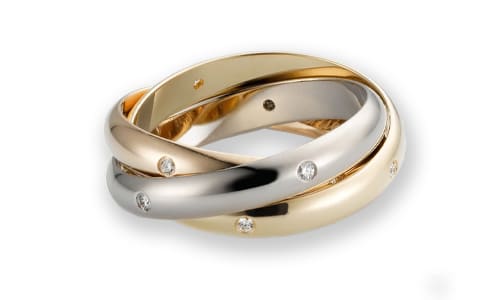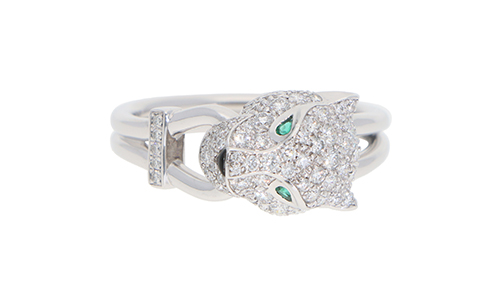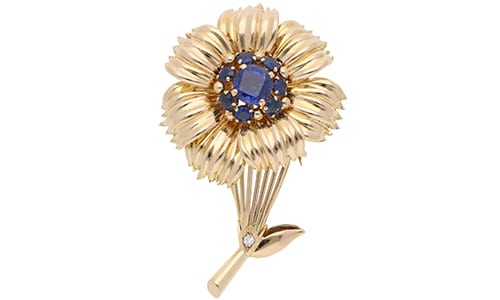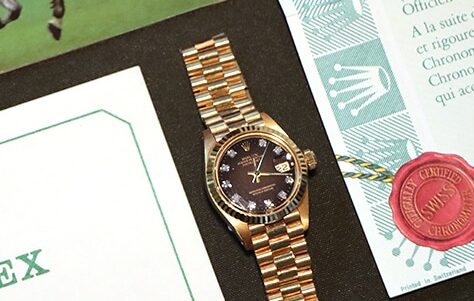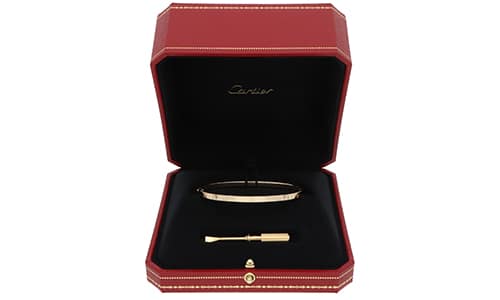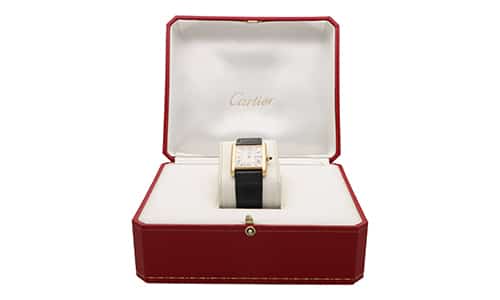With Trinity De Cartier Jewellery
For almost two hundred years, Cartier has been known for creating exquisite pieces that are designed to tell a story and capture your imagination. Each item is intricately crafted with layers of different meanings wrapped up in their elegant design – none more so than the Trinity de Cartier ring.
Almost a century after unveiling the unique design, the ring’s entwined mixed metal bands still capture the wearer’s imagination, and the design has been expanded to other pieces like bracelets and earrings.
While the Trinity de Cartier remains world-renowned for its simple elegance, the design’s meaning has changed over the decades in line with shifts in societal attitude.
The History Of The Trinity De Cartier Design
In 1924, Louis Cartier, son of the brand’s founder, created the now-iconic design at the request of a French artist who was in search of a truly unique piece. The classic piece had humble beginnings but was soon picked up by some of the world’s most beloved stars of the silver screen like Grace Kelly and Gary Cooper and became one of Cartier’s most successful designs of all time.
It wasn’t until the 80s when the design was finally named “Trinity” at the same time as it was added to the “Les Must de Cartier” core collection. Throughout the 80s, the collection name was engraved on the yellow gold band of every ring but was later phased out for fears of it interfering with the delicate design.
The style of the ring has shifted over the decades to match trends at the time. There have been changes in the shape, style or even size. In the 1990s, the ring was enlarged to match the chunky jewellery trend that the era became known for. Still, it never strayed far from the original design to protect Louis Cartier’s vision and meaning.
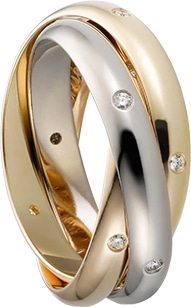
The Meaning Behind The Trinity Design
The Trinity de Cartier has been cherished for centuries thanks to the design’s thoughtful symbolism. Louise Cartier created the classic intertwined rings design to encapsulate the unending nature of life’s most important relationships.
The three bands, one yellow gold, one white gold, and one rose gold, symbolise friendship, fidelity and love, which Louis Cartier believed to be life’s three most powerful bonds. The intertwined design of the three rings represents that the three relationships are often also entangled.
While the meaning of the specific colours has been debated for decades, most people agree that the white gold represents enduring friendships, rose gold represents everlasting love, and yellow gold for fidelity and loyalty.
Alternative Meanings
As one of the jewellery industry’s most recognisable and enduring designs of the last century, it’s understandable that new meanings have become attached to the Trinity design, outside of what Louis Cartier originally had in mind.
While many wearers still appreciate the design’s original intention, others have chosen to adopt more contemporary symbolism.
For many Christians, the meaning of the Trinity de Cartier aligns more closely with the historic meaning of the word. They believe that the rings represent the Father, the Son, and the Holy Spirit, and the ring reminds them of their commitment to their faith.
Similarly, many people of Celtic heritage believe the design to be inspired by the Celtic knot. The knot is one of the Celtic culture’s most recognisable symbols and represents the Celtic Mother goddesses. The knot can also represent the meeting of land, sky and sea.
In the world of contemporary art, the ring is seen more as a sculpture than an accessory. The ring’s design represents the combination of factors that come together in a piece of artwork – culture, history and personal experience.
Understandably, married couples often choose to believe in the ring’s original meaning of love, friendship, and fidelity. Because of this, the Trinity de Cartier design is a popular choice for wedding rings.
The Trinity De Cartier Today
While almost a century on, the Trinity de Cartier is one of the world’s most recognisable designs, it has undergone some changes in the past few decades.
In 2014, Cartier announced the most extensive redesign of the Trinity since its inception to an almost unrecognisable solitaire ring. However, the more traditional Trinity design has continued to be sold alongside the newer version.
It’s not just redesigning that the Trinity ring has experienced. Seeing the design’s enduring popularity prompted Cartier to expand the collection. In 1930, the design was adapted into a mixed-gold bracelet. This original bracelet design was discontinued after three decades, but another Trinity inspired bracelet was released only a few years ago.
This time the three gold bands feature in a bead on a corded bracelet for a more contemporary look, although they have also introduced a more traditional gold chain bracelet.
The Trinity design has also inspired many incarnations of necklaces and earrings too. The intertwined rings were made more slender and turned into a pendant sold with a simple gold chain, a looped rose gold chain, or a cord to match the more contemporary bracelet design.
The shape itself has even been given a facelift, with Cartier opting for a more intricate heart design instead. Ultimately, the Trinity de Cartier has become one of the most iconic designs in the world; no matter how it is adapted, its symbolism remains iconic.

